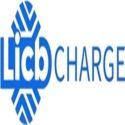Notifications

7 minutes, 18 seconds
-62 Views 0 Comments 0 Likes 0 Reviews

As a Professional EV Charger Manufacturer in China, Topper Company Delivers Reliable Electric Vehicle Charging Stations and Comprehensive Charging Solutions.
As electric vehicles (EVs) continue to grow in popularity, more homeowners are installing EV chargers at home for convenient, reliable charging. When selecting a charger, one of the key technical specs to understand is amperage — or "amps." This figure plays a crucial role in how quickly your EV charges and how well the charger integrates with your home’s electrical system.
In this article, we’ll explain what amperage means, how it impacts EV charging, and what to consider when choosing a home EV charger.
“Amps” (short for amperes) measure electrical current—the amount of electricity flowing through a wire at a given time. In EV charging, amperage indicates how much current the charger supplies to your car’s battery.
Think of it like water flowing through a hose: amps are the volume of water flowing, while voltage is the pressure pushing it through. Higher amperage means more electricity flowing and faster charging—assuming your EV and electrical system can handle it.
Your vehicle’s onboard charger sets the maximum current it can accept. Amperage affects:
Charging Speed: More amps generally mean faster charging (up to your EV’s limit).
Energy Efficiency: Proper amperage ensures efficient charging without overloading or overheating.
Compatibility: Not all vehicles or home electrical systems support high-amp chargers. Choosing the right amperage protects your system and ensures safety.
Most modern EVs accept between 32 and 50 amps, with some high-performance models supporting up to 80 amps. The actual current drawn depends on both your car’s acceptance rate and the charger’s output.
EV chargers fall mainly into two categories: Level 1 and Level 2, each with different amperage ranges.
Level 1 Chargers: 12–16 Amps
Voltage: 120 volts (standard household outlet)
Amperage: Usually 12 to 16 amps
Charging Speed: About 3–5 miles of range per hour
Level 1 chargers are simple—they plug into a normal wall outlet. While easy to use, they charge very slowly, often taking over 24 hours to fully recharge an EV. They're best for plug-in hybrids or drivers with low daily mileage.
Level 2 Chargers: 16–80 Amps
Voltage: 240 volts (similar to home dryers or ovens)
Amperage: 16 to 80 amps
Charging Speed: Approximately 15–75 miles of range per hour
Level 2 chargers are the most common home choice for faster, more practical charging. Most home Level 2 units deliver between 30 and 50 amps, enough to fully charge most EVs overnight.
Selecting amperage isn’t about picking the highest number; it’s about balance. Consider:
Your Vehicle’s Charging Limits
Check your EV’s maximum onboard charger rating. For example, if your car accepts only 40 amps, an 80-amp charger won’t charge it faster—it just costs more.
Your Daily Driving Needs
If you drive less than 50 miles daily, a 32-amp charger might be sufficient. Longer commutes or multiple daily trips could justify a higher amperage charger.
Your Home Electrical System
High-amp chargers draw more power and may overload older panels. Have a licensed electrician inspect your system before installing chargers above 40 amps.
High-amp Level 2 charger installation requires careful planning:
Electrical Panel Capacity: Confirm your panel can support the charger’s load with a dedicated 240V circuit.
Dedicated Circuit Breaker: Chargers need their own breaker—typically sized 20% higher than the charger’s max amperage (e.g., a 50-amp charger needs a 60-amp breaker per NEC code).
Professional Installation: Licensed electricians ensure code compliance, proper grounding, safe operation, and preserve warranty coverage.
Permits & Inspections: Local regulations may require permits and post-installation inspections. Always check before proceeding to avoid fines or insurance issues.
Choose chargers with safety features like:
Overload protection
Ground fault detection
Temperature monitoring
Surge protection
These features safeguard your home and EV from electrical faults.
Even if your current EV charges at 32 amps, installing a higher-capacity charger (like 50 or 60 amps) can future-proof your setup. As EV batteries improve, future vehicles might charge faster with higher amperage.
If your electrical system supports it, a higher-amp charger installed now can save upgrade costs later. You can always set the charger to deliver lower current initially and increase it as needed.
| Amps | Estimated Range Added per Hour | Typical Full Charge Time* |
|---|---|---|
| 16 | ~10–12 miles | 20–30 hours |
| 32 | ~25 miles | 8–12 hours |
| 40 | ~30 miles | 6–10 hours |
| 48 | ~35 miles | 5–9 hours |
| 80 | ~60–75 miles | 2–4 hours |
*Charging times vary by battery size and efficiency.
Amperage is a critical factor when choosing a home EV charger. While higher amps usually mean faster charging, the best choice depends on your vehicle’s limits, daily driving, and your home’s electrical system.
Whether you pick a 32-amp charger for everyday use or invest in an 80-amp unit for future-proofing, prioritize safety and professional installation. Staying informed today means your EV charging will be fast, safe, and reliable for years to come.Know more about Google SEO Directory
China EV Chargers EV Charger Manufacturer EV Charging Solutions

